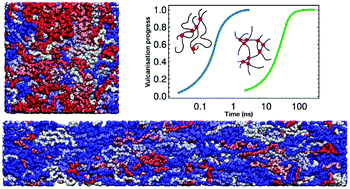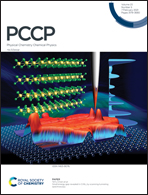Towards realistic simulations of polymer networks: tuning vulcanisation and mechanical properties†
Abstract
Simulations of coarse-grained network models have long been used to test theoretical predictions about rubber elasticity, while atomistic models are still largely unexplored. Here we devise a novel algorithm for the vulcanisation of united-atom poly(cis-1,4-butadiene), characterize the topology of the resulting networks and test their mechanical properties. We observe clear changes in the network structure when using slower vulcanisation, contrary to the traditional view that cross-linking simply freezes the melt configuration. Non-ideality of our networks reverberates on the distribution of strand length and on the strands deformation, which is highly non-affine, especially for short strands. Nevertheless, we do recover some of the trends observed on ideal bead-and-spring networks and controlled laboratory experiments, such as the linear relationships linking the degree of cross-linking and the density. We also compare different deformation methods and find step-equilibrium protocols to be more reliable. Regardless of the adopted method, it is advisable to precede the deformation by a pre-stretching cycle in order to release internal stresses accumulated during the vulcanisation.



 Please wait while we load your content...
Please wait while we load your content...